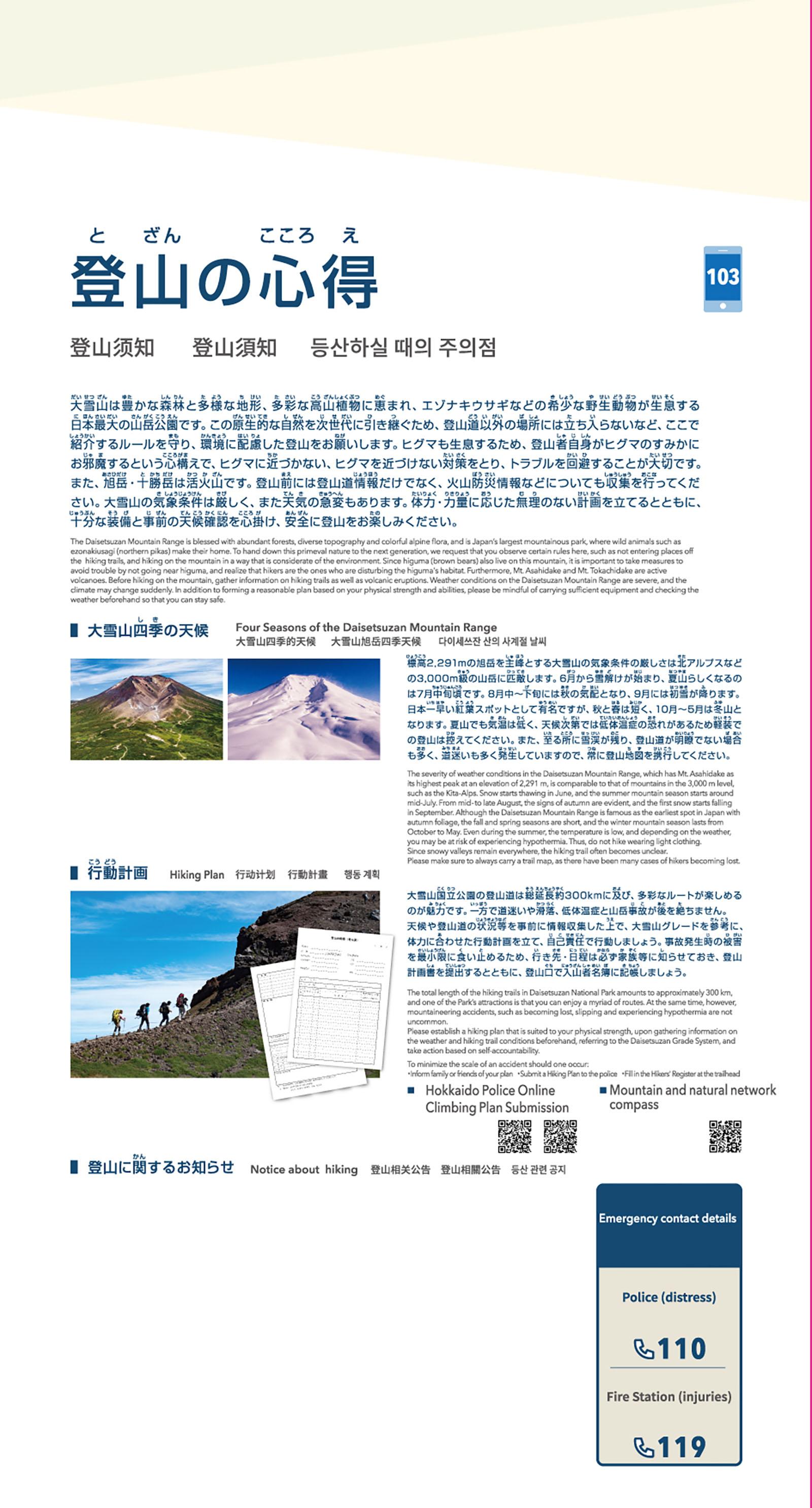




The Daisetsuzan Mountain Range is blessed with abundant forests, diverse topography and colorful alpine flora, and is Japan’s largest mountainous park, where wild animals such as ezonakiusagi (northern pikas) make their home. To hand down this primeval nature to the next generation, we request that you observe certain rules here, such as not entering places off the hiking trails, and hiking on the mountain in a way that is considerate of the environment. Since higuma (brown bears) also live on this mountain, it is important to take measures to avoid trouble by not going near higuma, and realize that hikers are the ones who are disturbing the higuma's habitat. Furthermore, Mt. Asahidake and Mt. Tokachidake are active volcanoes. Before hiking or trekking on the mountain, gather information on mountain trails as well as volcanic eruptions. Weather conditions on the Daisetsuzan Mountain Range are severe, and the climate may change suddenly. In addition to forming a reasonable plan based on your physical strength and abilities, please be mindful of carrying sufficient equipment and checking the weather beforehand so that you can stay safe.
The total length of the mountain trails in Daisetsuzan National Park amounts to approximately 300 km, and one of the Park’s attractions is that you can enjoy a myriad of routes. At the same time, however, mountaineering accidents, such as becoming lost, slipping and experiencing hypothermia are not uncommon.
Please establish a hiking plan that is suited to your physical strength, upon gathering information on the weather and mountain trail conditions beforehand, referring to the Daisetsuzan Grade System, and take action based on self-accountability.
To minimize the scale of an accident should one occur:
・Inform family or friends of your plan
・Submit a hiking plan to the police
・Fill in the Hikers' Register at the trailhead
The severity of weather conditions in the Daisetsuzan Mountain Range, which has Mt. Asahidake as its highest peak at an elevation of 2,291 m, is comparable to that of mountains in the 3,000 m level, such as the Kita-Alps. Snow starts thawing in June, and the summer mountain season starts around mid-July. From mid- to late August, the signs of autumn are evident, and the first snow starts falling in September. Although the Daisetsuzan Mountain Range is famous as the earliest spot in Japan with autumn foliage, the fall and spring seasons are short, and the winter mountain season lasts from October to May. Even during the summer, the temperature is low, and depending on the weather, you may be at risk of experiencing hypothermia. Thus, do not climb wearing light clothing. Since snowy valleys remain everywhere, the hiking trail often becomes unclear. Please make sure to always carry a trail map, as there have been many cases of climbers becoming lost.